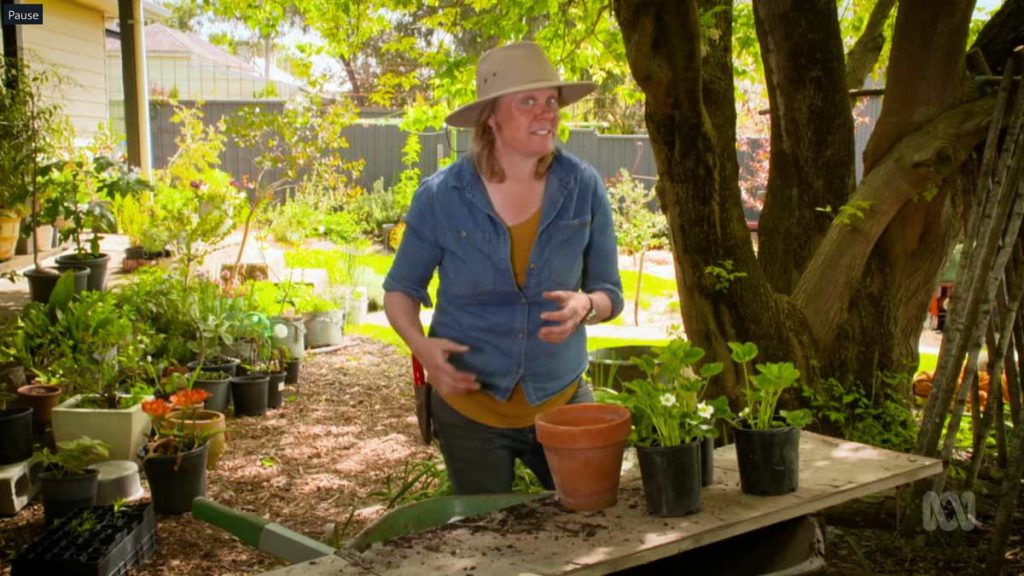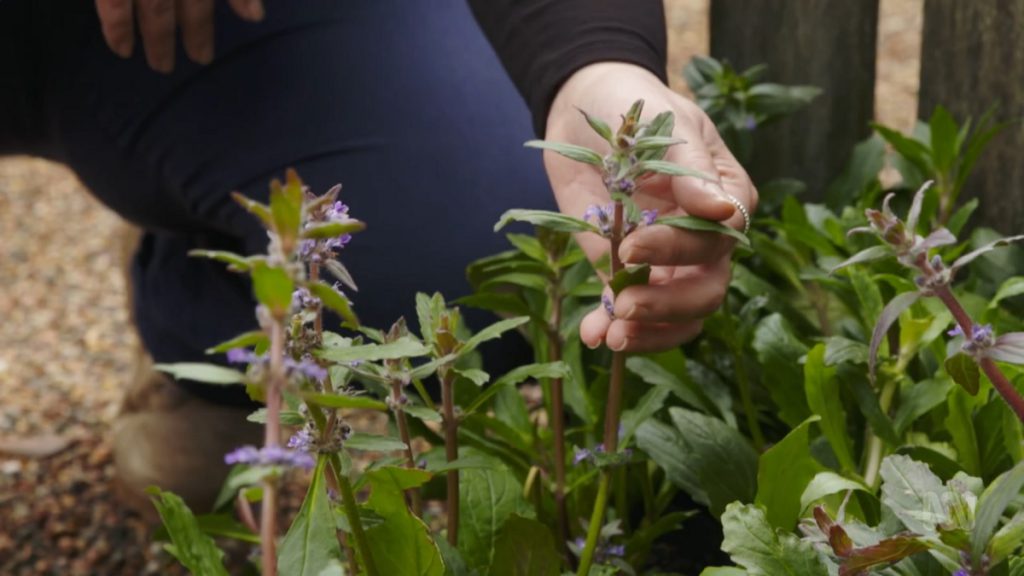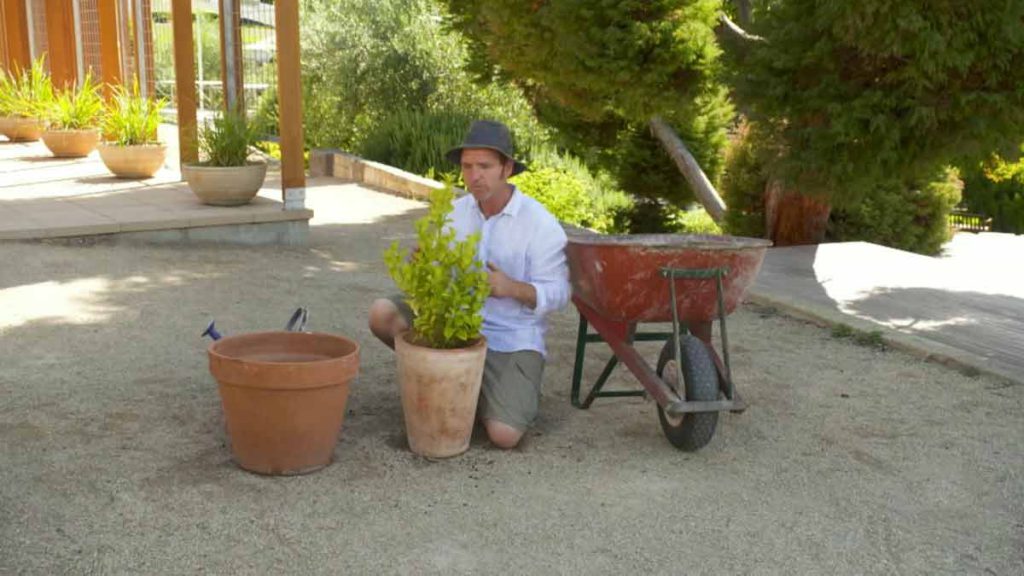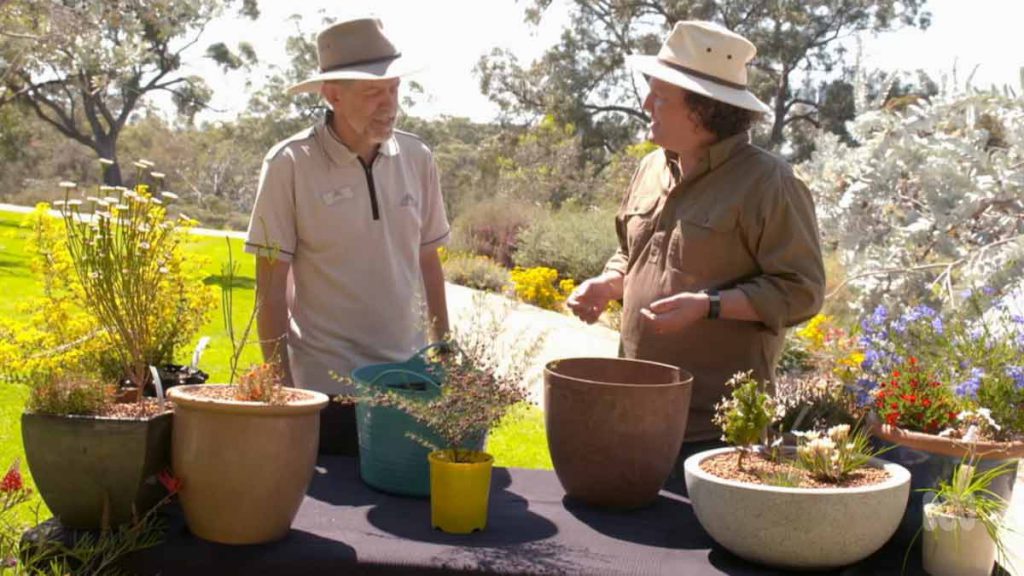Gardening Australia episode 30 2021: Tino Carnevale meets a dietitian gardening for health; Millie Ross conserves rare plants; Josh Byrne grows edible perennials; Clarence Slockee visits a youth justice project; and Jerry Coleby-Williams profiles palms.
Inspiring, entertaining and full of practical advice, join Costa Georgiadis and the team as they unearth gardening ideas, meet avid gardeners and look at some of the most inspiring gardens from across the country.
Gardening Australia episode 30 2021
Feel Good Gardening
Tino meets a dietitian and gardener who has health at the heart of her productive patch. We talk all the time about how gardening is great for our wellbeing; how it’s therapeutic and how eating fresh fruit and vegies is good for your health. Gardeners know this instinctively, experiencing the benefits of gardening every time we wander out to pick a carrot, water a pot or smell a flower.
Ngaire is a dietitian who specialises in aging and brain health. She’s the author of three books and her work focuses on encouraging people to enjoy real food to achieve peak body and brain function as they age. Her pet topics are physical activity, proper nutrition to reduce your dementia risk, the importance of the gut biome and cell protective eating. Gardening is part of her philosophy on thriving as you age because of the physical activity it provides, the consequences of gardening and eating your own produce on your nutrition, your gut biome and your cells, and the effects of being in the garden on your brain.
Care for the Rare – Gardening Australia episode 30 2021
Millie visits the Royal Botanic Gardens in Cranbourne, to go behind the scenes and learn how they are bringing rare and threatened wild species into cultivation.
The Australian Garden in Cranbourne is part of the Royal Botanic Gardens Victoria – 15 hectares of incredible landscapes and cultivated gardens that celebrate Australian flora. Botanic Gardens like this one, allow us to revel in the beauty of plants and they’re also centres of plant research. But increasingly, they are also places that are conserving and cultivating rare and threatened species for their future survival. Today Millie meets the Manager of Horticulture here – John Arnott – to learn a bit more about this new role that’s being taken on by botanic gardens.
Productive Perennials
Josh plants some of his favourite edible perennial plants, that look as good as they taste. There are plenty of edible perennial plants that will produce year after year for less work.
Globe artichoke is a perfect example. Josh has one growing alongside the driveway, under a mulberry tree in north sun. The silvery foliage and electric blue flowers are attractive, but it’s the flower bud is the part we eat. The best way to propagate globe artichoke is via a sucker. After flowering, take some suckers off the base and replant. They can also be planted out from seedlings grown from seed. Josh adds compost and manure to prepare his site, before planting the seedlings. He mulches and waters in.
Behind one of Josh’s water tanks is a garden full of native plants. He’s putting in a midyim berry, another native that produces masses of sweet, slightly tart berries. It’s the perfect plant to fill a gap. Midyim berries prefer free draining soils, so Josh’s sandy soil is perfect, but he’ll add a little fertiliser to help it establish. He mulches and waters in and can expect it to grow to around 1m x 1m.
Spring Into Colour
Jane looks at some of the best plants to bring a burst of late spring colour to any garden. Late spring can be a bit subdued in cooler climates, as the vibrant burst of early spring has finished, and the summer flowering has not yet started. But there are decorative shrubs that will provide colour at this ‘in between’ time.
Lessons from the Land – Gardening Australia episode 30 2021
Clarence visits a gardening project, growing skills and cultural connections. Behind the walls of a juvenile detention centre in Sydney’s west, something special is happening. Young people are connecting with nature and plants and in some cases, culture in a specially built “Learning Circle”.
Wiridjiribin Nura (Lyrebird Country) is the garden space incorporating the circle. The circle is a focal point and includes a bowl for fire at the centre with stones all around for sitting.
There are three-paths through the garden representing “respect”, “patience” and “observation” – and these are the basic mantra for the space. Students from the centre have been involved with the building and planting of the space from the beginning and continue to take part in practical gardening and maintenance activities.
Each plant in this space has a traditional use – for example bush tucker, tools, medicine and weaving.
Positioning Productive Gardens
Sophie explains where to position your productive patch. One of the most important considerations for starting a vegie patch is location. Ideally you need a sunny, open site as many vegies will need at least 6-8 hours full sun to ensure high yields. If you can, it’s best to choose a site free of shadows.
In the warmer months however, you can have too much of a good thing! Sophie likes to provide temporary shade for establishing seedlings, or crops that don’t like drying out (like lettuces). Sophie says shady spots are more suitable for leafy greens, like kale and rocket.
Another consideration is how windy a site is, as wind can dry plants out. Consider planting a hedge to act as a windbreak. Sophie uses tree wormwood, which works well in her climate.
Root competition from surrounding trees and large shrubs can affect your vegie patch, robbing the plants of moisture and nutrients, so factor this in when finding the perfect spot for your patch!




